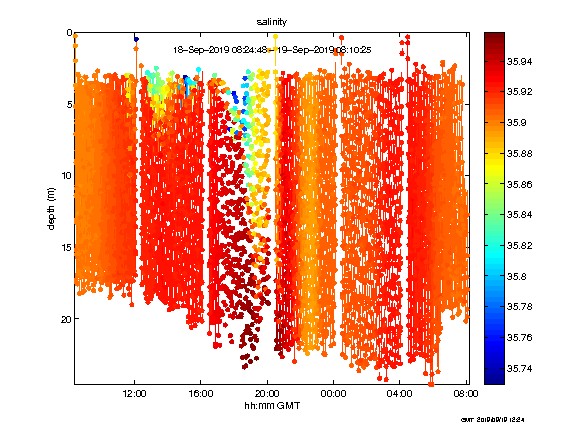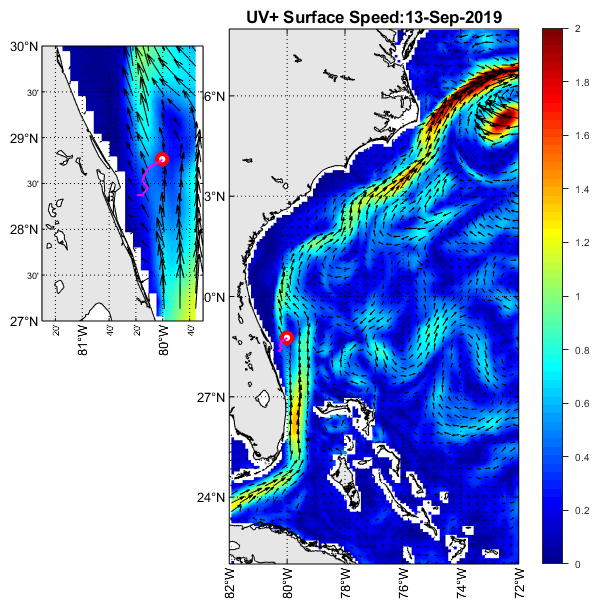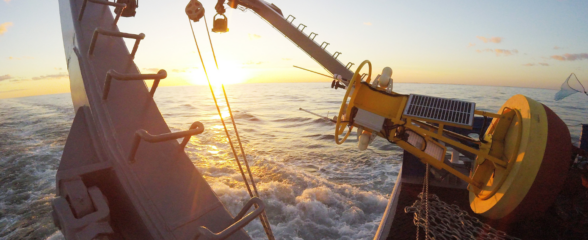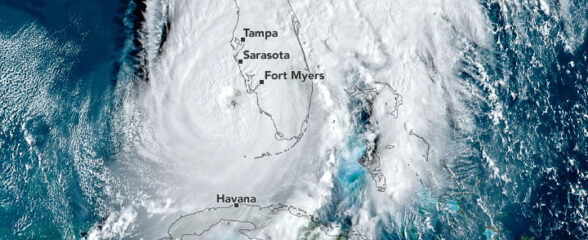
SECOORA gliders are capturing water column information ahead of Tropical Storm Jerry as he moves closer to the US. Data from gliders allows forecasters and scientists to improve predictions of the storm’s potential intensity.
Two gliders were deployed this month. The SECOORA glider Franklin (operated by UGA/SkIO) was deployed off the coast of Georgia and the USF glider Sam off the East coast of Florida.
Glider Data

The fleet is collecting water temperature and salinity measurements throughout the water column. Every 4 hours they transmit data back to land via satellite. This data helps scientist and forecasters identify how hurricanes mix sub-surface and surface waters.

NC State University supplies daily CNAPS model output of surface currents. This model output provides context, such as the location of the Gulf Stream and Gulf Stream eddies, for the glider observations (pictured above).
Learn More
Listen to the Weather Geeks podcast, What Flies Beneath: How Underwater Gliders Can Improve Hurricane Forecasts, to learn more!
Related news

SECOORA Webinar: Collaborative Fisheries with a SMILE (Size Matters: Innovative Length Estimates)
On Tuesday, June 24th at 12 PM ET, Dr. Jennifer Loch from Reef Environmental Education Foundation (REEF) will discuss the SMILE (Size Matters: Innovative Length Estimates) project as part of SECOORA's Coastal Observing in Your Community Webinar Series.

Funding Cuts to NOAA IOOS Will Hurt the Southeast
Proposed federal funding cuts would eliminate the IOOS Regional Observations budget for next year. Contrary to the budget Congress has already approved for this year, the Executive Branch wants these proposed cuts to go into effect in 2025.

SECOORA Webinar on the Rapid Intensification of Hurricane Ian: Warm Subsurface Water on the Wide Continental Shelf
Join us Thursday, April 24th at 12 PM ET for the April installment of the SECOORA Coastal Observing in Your Community Webinar Series! This month, we will hear from Dr. Yonggang Liu from the University of South Florida. He will discuss his research on the rapid intensification of Hurricane Ian in relation to anomalously warm subsurface water on the wide...